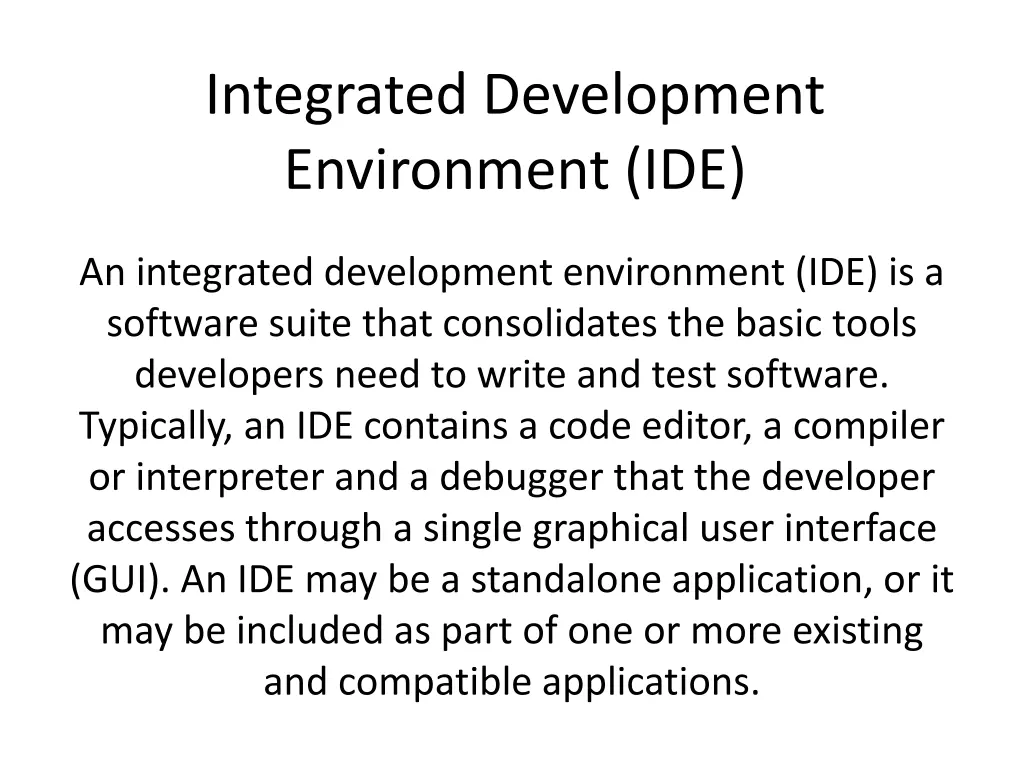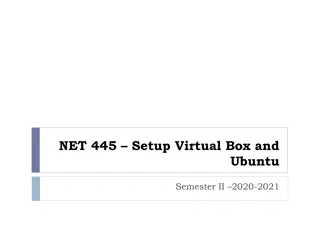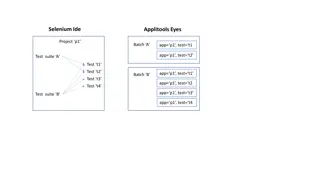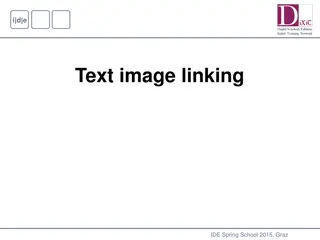
Understanding Integrated Development Environments
An Integrated Development Environment (IDE) is a software suite that combines essential tools for developers to write and test software in a unified interface. IDEs enhance programmers' productivity by enabling real-time code checking, auto completion, compilation, debugging, and support for various programming languages. They also provide visual programming capabilities and testing environments for mobile applications.
Download Presentation

Please find below an Image/Link to download the presentation.
The content on the website is provided AS IS for your information and personal use only. It may not be sold, licensed, or shared on other websites without obtaining consent from the author. If you encounter any issues during the download, it is possible that the publisher has removed the file from their server.
You are allowed to download the files provided on this website for personal or commercial use, subject to the condition that they are used lawfully. All files are the property of their respective owners.
The content on the website is provided AS IS for your information and personal use only. It may not be sold, licensed, or shared on other websites without obtaining consent from the author.
E N D
Presentation Transcript
Integrated Development Environment (IDE) An integrated development environment (IDE) is a software suite that consolidates the basic tools developers need to write and test software. Typically, an IDE contains a code editor, a compiler or interpreter and a debugger that the developer accesses through a single graphical user interface (GUI). An IDE may be a standalone application, or it may be included as part of one or more existing and compatible applications.
How does an IDE work? The interface allows the developer to compile and execute code incrementally and manage changes to source code in a uniform manner. IDEs are typically designed to integrate with third-party version control libraries, like GitHub or Apache Subversion. Popular IDE tools include NetBeans, Eclipse, IntelliJ , Visual Studio and Windows PowerShell.
Why use an IDE? The purpose of using an IDE is to maximize a programmers productivity by making his work easier. This is done by: Checking the code in real time and providing feedback when syntax errors are introduced Auto completing code to achieve faster development Compiling and debugging the code to reveal any runtime errors
Visual programming and language support Visual programming is a usage scenario in which an IDE is generally required. Visual Basic allows users to create new applications by moving programming, building blocks, or code nodes to create flowcharts or structure diagrams that are then compiled or interpreted. The most common languages supported by IDEs are Java, C# and C but most IDEs have plugins to support alternative languages such as C++, Ada, Perl and Python.
Testing in the IDE The IDEs provide emulators for further testing the developed app and seeing it work in any kind of mobile device. In this way someone can test their app in any mobile screen size and see how it looks. Can test the resources needed for the app to run properly and know the necessary features the device must have. Even though IDEs provide emulators, there are emulators on their own such as Google Android Emulator, Android SDK Emulator, iPhoney and more for its mobile operating system.






















